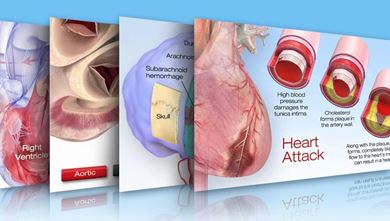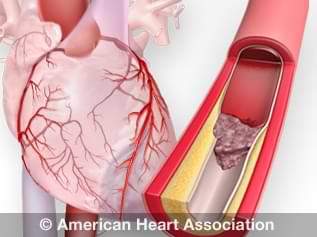Síntomas de ataque al corazón en mujeres
Datos de interés
- Es importante saber los síntomas específicos de los ataques cardíacos para las mujeres.
- Llama de inmediato al 911 (o tu número de emergencia local) si presentas cualquier signo de un ataque cardíaco.
- Las enfermedades cardíacas se pueden prevenir con opciones de estilo de vida saludables y cuidados preventivos.
Cada 40 segundos, alguien sufre un ataque al corazón en los Estados Unidos. Se produce cuando el flujo sanguíneo que transporta el oxígeno al músculo cardíaco se reduce o interrumpe por completo. Esto sucede porque las arterias que suministran sangre al corazón pueden estrecharse lentamente debido a la acumulación de grasa, colesterol y otras sustancias.
A pesar de que la enfermedad cardíaca es la principal causa de muerte en mujeres en los Estados Unidos, a menudo estas atribuyen los síntomas a afecciones no tan graves, como el reflujo de ácido gástrico, la gripe o las molestias propias de la vejez.
Muchas mujeres piensan que las señales de un ataque cardíaco son inconfundibles. Sin embargo, es posible que estas no sean tan evidentes y sean confusas. Incluso cuando las señales son sutiles, los resultados pueden ser mortales, especialmente si la persona no recibe asistencia de inmediato.
Si presentas alguno de estos signos, llama al 911 (o al número de emergencia local) y ve a un hospital de inmediato.
- Presión, constricción, opresión o dolor incómodos en el centro del pecho. Puede durar más de unos minutos o desaparecer y regresar.
- Dolor o molestia en una de las siguientes áreas:
- Brazos (uno o ambos)
- Espalda
- Cuello
- Mandíbula
- Estómago
- Respiración entrecortada, con o sin molestia en el pecho.
- Otros signos, incluyendo lo siguiente:
- Sudor frío repentino
- Náuseas
- Sensación de mareo
Como ocurre en los hombres, el síntoma más frecuente de ataque cardíaco en mujeres es una molestia o dolor en el pecho. Algunas mujeres que han sufrido un ataque al corazón describen una presión en la parte superior de la espalda que se siente como una constricción o como una cuerda que las ata. Las mujeres tienen otros síntomas que suelen asociarse menos con el ataque al corazón, por ejemplo:
- Ansiedad
- Respiración entrecortada
- Estómago revuelto
- Dolor en los hombros, la espalda o los brazos
- Cansancio y debilidad inusuales
Mira una animación de un ataque al corazón
Cuídate bien
Las enfermedades cardíacas, en la mayoría de los casos, son evitables. Haz lo siguiente:
- Programa una cita con tu profesional de la salud para conocer tu riesgo de padecer enfermedades cardíacas.
- Deja de fumar. Tan solo un año después de dejar de fumar, el riesgo de enfermedad coronaria se reduce en un 50%.
- Intenta hacer, al menos, 150 minutos semanales de actividad aeróbica de intensidad moderada (como caminata a paso ligero) o 75 minutos semanales de actividad intensa (como trotar) o una combinación de ambas. Trata de distribuir la actividad a lo largo de la semana. También es bueno incluir actividades de fortalecimiento muscular de intensidad de moderada a alta, como entrenamiento de resistencia o con peso, al menos dos veces a la semana.
- Incluye en tu dieta frutas, verduras, proteínas magras, granos integrales, lácteos bajos en grasa o descremados, frutos secos y semillas. Limita los alimentos procesados, los azúcares agregados, el sodio y el alcohol. Echa un vistazo a estos consejos de cocina saludable. Descubrirás remplazos inteligentes, ideas para tentempiés saludables y mejores métodos de preparación.
Obtén más información sobre la salud cardíaca de las mujeres.









